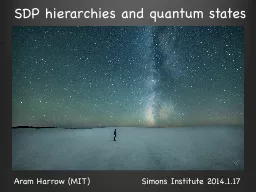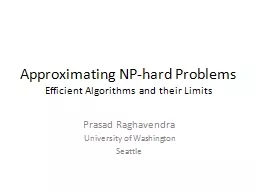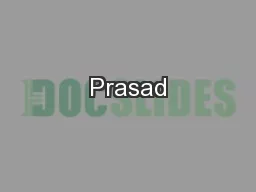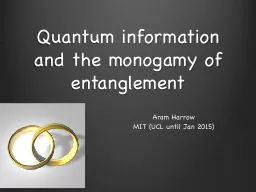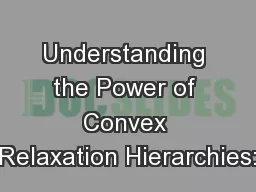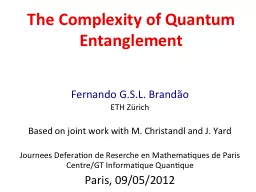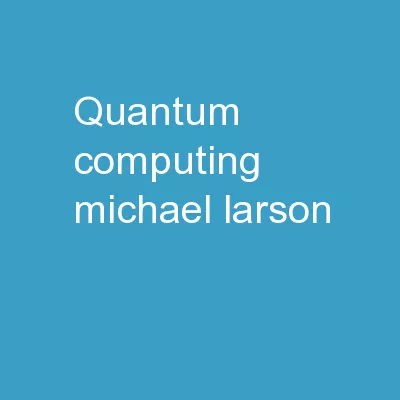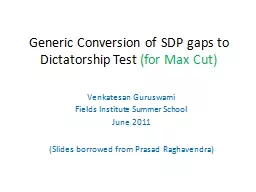PPT-SDP hierarchies and quantum states
Author : trish-goza | Published Date : 2017-08-04
Aram Harrow MIT Simons Institute 2014117 a theorem Let M 2 R m n Say that a set S n k is δgood if φm k S such that j 1 j k S fkδ max S Sn
Presentation Embed Code
Download Presentation
Download Presentation The PPT/PDF document "SDP hierarchies and quantum states" is the property of its rightful owner. Permission is granted to download and print the materials on this website for personal, non-commercial use only, and to display it on your personal computer provided you do not modify the materials and that you retain all copyright notices contained in the materials. By downloading content from our website, you accept the terms of this agreement.
SDP hierarchies and quantum states: Transcript
Download Rules Of Document
"SDP hierarchies and quantum states"The content belongs to its owner. You may download and print it for personal use, without modification, and keep all copyright notices. By downloading, you agree to these terms.
Related Documents

